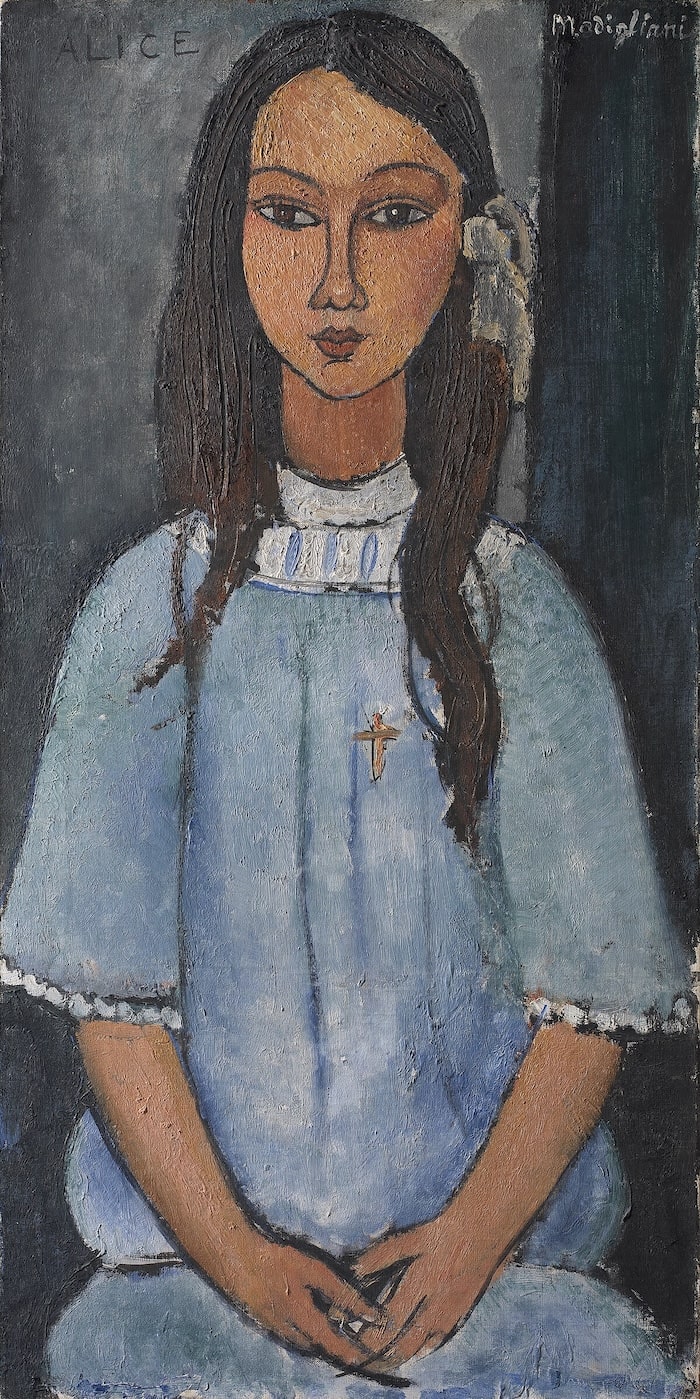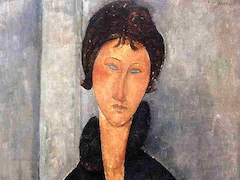Alice, 1918 by Amedeo Modigliani

Created in 1915, Alice is a striking example of Modigliani's ability to convey complex emotions through simple yet evocative compositions. The painting features Alice, a young woman with almond-shaped eyes, a serene expression, and an elongated neck—a hallmark of Modigliani's style. The use of a muted color palette, with soft tones of blues and browns, enhances the painting's contemplative mood.
Modigliani's influence from African art and Italian Renaissance masterpieces is evident in "Alice." The mask-like quality of the face, with its smooth contours and stylized features, reflects his admiration for African sculptures, which he encountered during his time in Paris. Additionally, the elegant lines and harmonious proportions of the figure draw inspiration from the works of Italian Renaissance artists, whom Modigliani greatly revered.
The painting's composition is both intimate and introspective. Alice's gaze, slightly averted, suggests a moment of reflection or quiet contemplation. Modigliani's use of bold, expressive brushstrokes adds texture and depth to the canvas, creating a sense of three-dimensionality. The subtle interplay of light and shadow further enhances the painting's emotional resonance.
Alice is more than just a portrait; it is a glimpse into the inner world of the subject, rendered with sensitivity and empathy. Modigliani's ability to capture the essence of his sitters, transforming them into timeless icons, is a testament to his mastery as an artist. Through "Alice," viewers are invited to engage with the painting on a deeper level, experiencing the quiet beauty and emotional depth that define Modigliani's work. The painting stands as a powerful representation of Modigliani's unique artistic vision and his enduring legacy in the world of modern art.
















